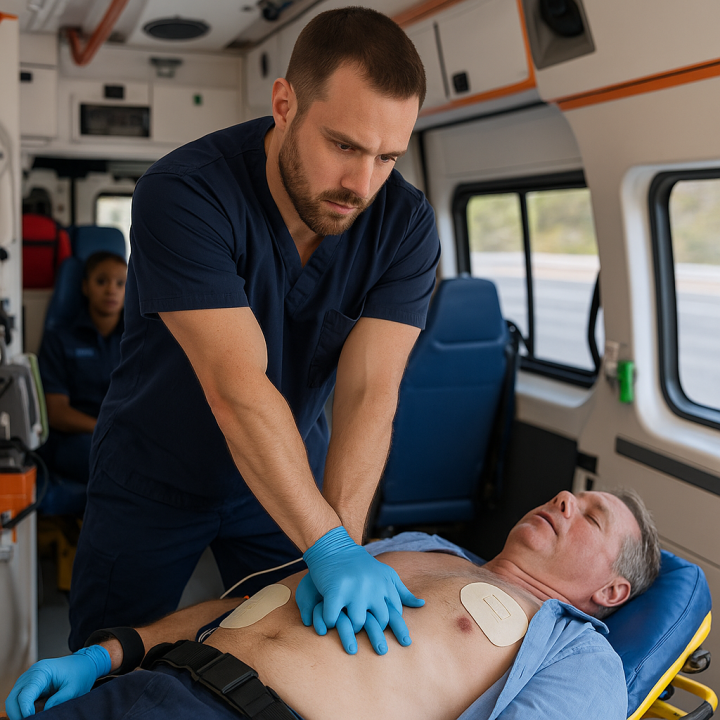When cardiac arrest strikes, CPR needs to begin immediately—no matter where the patient is. But what happens when that location is a moving ambulance?
Emergency medical providers are often faced with a difficult question: Should CPR be continued in transit, even if conditions are less than ideal? Here’s what the research, real-world experience, and guidelines have to say about CPR on the move.
🚑 The Challenge: CPR in Motion
Performing high-quality CPR in a stationary setting is already demanding. Add in the bumps, turns, and unpredictability of a moving vehicle, and it becomes even harder to deliver:
- Consistent compression depth and rate
- Full chest recoil
- Minimal interruptions
- Safe positioning for the provider
Ambulances aren’t designed for standing stability, which puts both the rescuer and the patient at risk.
📊 Is It Effective?
Studies show that CPR quality often decreases in moving ambulances due to instability and compromised positioning. Chest compressions may be too shallow, misaligned, or interrupted due to turns or sudden braking.
However, doing something is still better than nothing. If stopping CPR isn’t an option and transport is critical (e.g., heading to ECMO or PCI-capable center), providers are trained to adapt and deliver the best compressions possible.
⚙️ Solutions and Strategies
1. Mechanical CPR Devices
- Devices like the LUCAS™ or AutoPulse™ provide consistent compressions and reduce risk to personnel.
- Not all systems have access, but when available, they’re game-changers for CPR in transit.
2. Pull Over, If Possible
- Many EMS systems recommend briefly stopping the ambulance for rhythm analysis or shocks to ensure safety and effectiveness.
3. Kneeling Position and Seat Belts
- Providers may kneel beside the stretcher and use safety restraints while compressing.
- Newer ambulance designs now consider CPR positioning in layout plans.
4. Clear Role Assignments
- A second provider may manage the airway or monitor vitals to keep hands-off time minimal.
✅ Best Practice: Prioritize High-Quality CPR First
In many cases, staying on scene until Return of Spontaneous Circulation (ROSC) is achieved may be more effective than moving prematurely. Guidelines often recommend focusing on high-quality CPR and early defibrillation before transport unless transport is needed for definitive care.
Final Thoughts
CPR in a moving ambulance is not ideal—but it may be necessary. Knowing how to adjust technique, use available tools, and make sound transport decisions is key. With training, teamwork, and the right equipment, paramedics can make a powerful difference even under challenging conditions.
Because when every minute counts, CPR—wherever it’s done—can be a bridge to survival.


